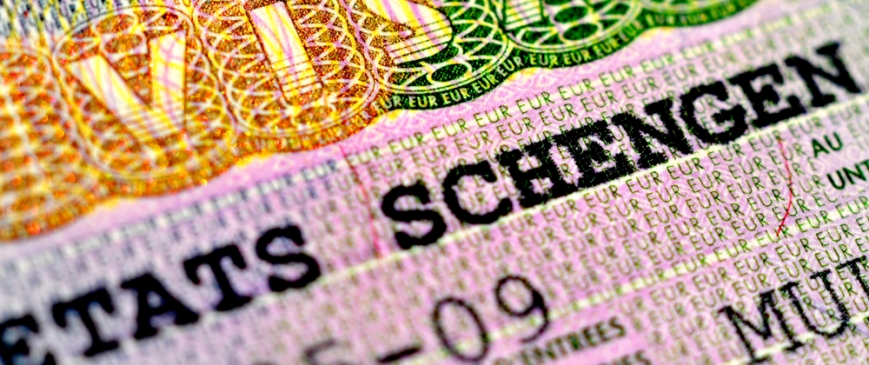
A death foretold
The worst refugee crisis since World War II, a seemingly never-ending string of terrorist attacks, and the rise of populism across Europe threaten to bring the Schengen area down. If the European Union wants to save Schengen, it needs to be more serious about protecting its external borders and managing the flow of refugees.
In June 1985, representatives of five European Union countries gathered on a boat on the Moselle river to sign the treaty that would abolish passport controls at their borders – and change the nature of travel and commerce across Europe for generations.
The Schengen agreement, initially an intergovernmental treaty covering Belgium, France, Luxembourg, the Netherlands, and West Germany, became EU law in 1997 and would become a defining feature of the European Union. Schengen covers 26 countries: EU member-states (except for Britain, Ireland, Romania, Bulgaria, Croatia and Cyprus) plus non-EU members Switzerland, Liechtenstein, Norway and Iceland. The treat covers a population of 400 million people, in an area of four million square kilometres. It has made trade and labour mobility between European countries easier.
Younger generations of Schengen citizens do not even conceive having to stop at borders when travelling across Europe: many have never even seen what a border post looks like. For the older generations, who recall long queues and burdensome checks while doing business or going on holidays abroad, Schengen is one of the most visible contributions the EU has made to their lives.
Up until a couple of years ago, everybody loved Schengen. But this love story seems to have come to an abrupt end, with politicians clamouring for a shutdown of the Schengen area, and EU countries reintroducing border controls.
The past two years have been rough for the European Union. Four major crises are challenging its very survival: debt, refugees, terrorism and, more recently, Brexit.
After several years of economic recession, the Eurozone experienced moments of panic when Greece was almost expelled for its inability to tackle its growing debt crisis. Greece also became the epicentre of yet another crisis, when hundreds of thousands of refugees, mainly fleeing from Syria, used the country as a gateway to claim asylum in Europe. On the first days of 2015, a terrorist attack hit French satirical magazine Charlie Hebdo in Paris. It was the first strike of a terror campaign orchestrated by the Islamic State (IS) against Europe, which has seen attacks in Belgium, France and Germany, and continues to further threaten the EU. Finally, in June 2016, Britons voted to leave the European Union. Although Britain is not part of Schengen or the Eurozone, the EU’s growing pains in dealing with its economy and its borders played a key role in swaying the vote.
All of these crises are intertwined. They have all contributed to the EU’s poor performance in recent years, which, in turn, has increased popular disenchantment with the European project and the rise of populism across the continent.
The problem with Schengen is that it was designed with fundamental flaws that politicians hoped would eventually be solved once the EU became more “integrated” – that is, something akin to a federation of states, more similar to the United States. The abolition of border controls was always supposed to be accompanied by a stronger external border, with common migration and security policies that would allow all Schengen countries to know who was getting in and why, and let Europeans and others roam freely across borders. But that never happened. Schengen was not prepared for external shocks, such as a massive exodus of refugees and the previously unthinkable possibility of European “home-grown” jihadists carrying out terrorist attacks on the continent.
The Schengen area showed weakness at the first sign of trouble. Seven countries (Austria, Denmark, France, Germany, Norway, Poland and Sweden) have border controls in place – although for different reasons. France shut its doors, declaring a state of emergency following numerous terrorist attacks in 2015 and 2016. Poland brought in temporary checks to deal with Pope Francis’s visit to Krakow and the Warsaw NATO summit; and the remaining countries because of uncontrolled flows of migration.
At the height of the refugee crisis, in February this year, some in the EU were prepared to drop Greece – the first time a country would have been expelled from the Schengen area. Talks of establishing a ‘Mini-Schengen’, or a smaller borderless area between a handful of countries, was gaining traction as the only alternative to restore order in the EU. The German government suggested that, before trying all this, the EU negotiate with Ankara to send failed asylum seekers back to Turkey. In the end, Angela Merkel’s view prevailed, and the EU signed a controversial deal with Turkey that has temporarily halted the influx of refugees. But the deal relies too heavily on Turkish President Recep Tayyip Erdogan’s good will – which is not something he has shown much of in recent months.
To save Schengen, the EU must realize that the idea of a European borderless area with no burden-sharing between countries is a thing of the past. The European Union may have been able to muddle through when it had the wind at its back. But that is not the case any longer, and there is little the EU could do to save Schengen if it does not agree on a common migration and security policy. EU countries should put more effort in controlling Schengen’s external border; and they should accept that some sort of quota system to distribute asylum seekers across Europe will be needed. Otherwise, they should face the inevitable: The EU will have written the chronicle of a death foretold.
Camino Mortera-Martinez is a research fellow and Brussels representative at the Centre for European Reform.
